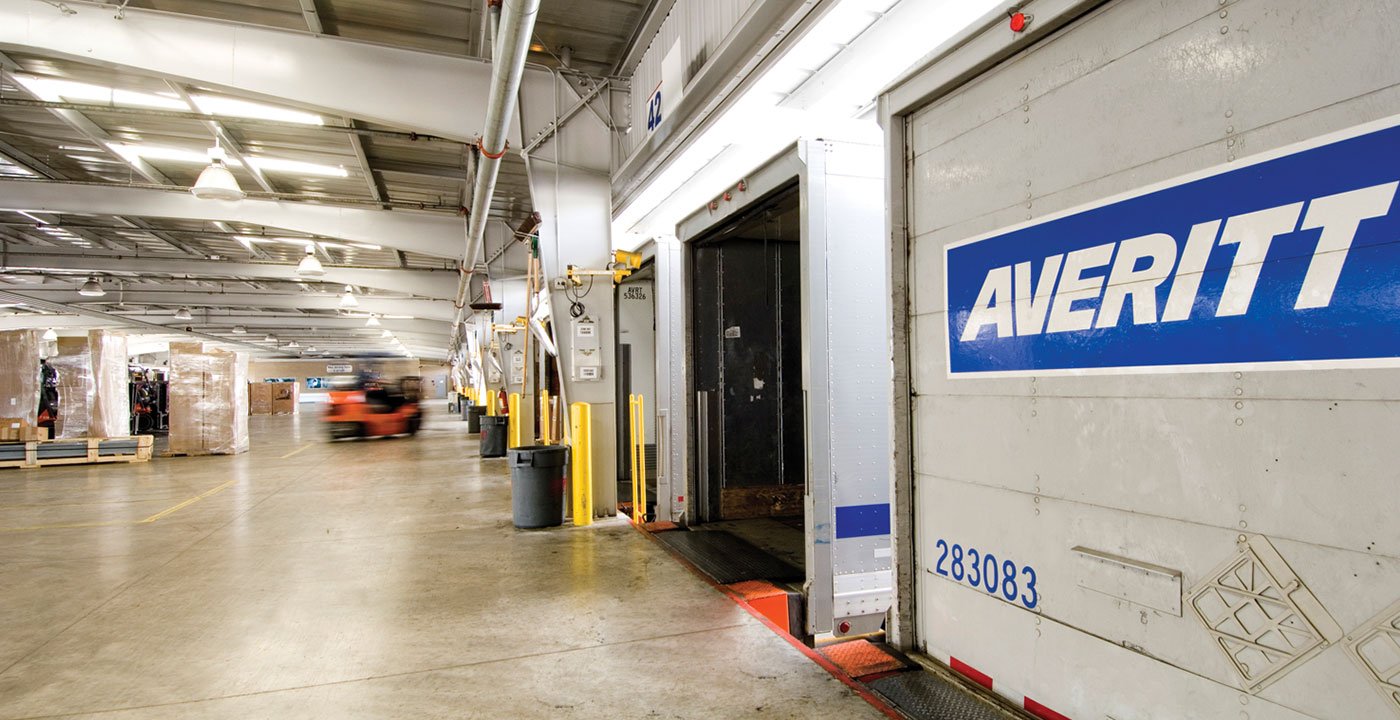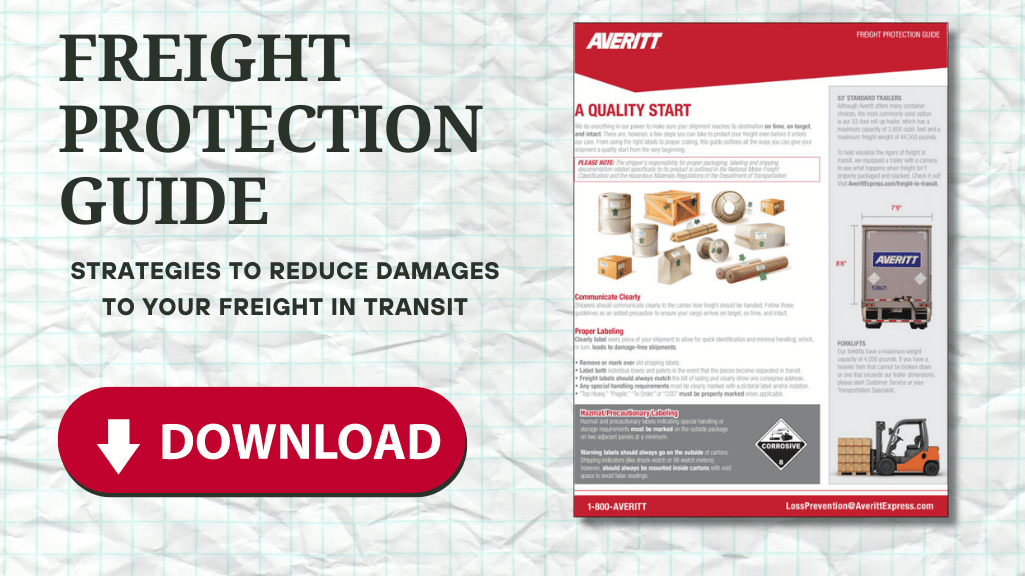“Just load the truck.”
For anyone not versed in the finer aspects of logistics and transportation management, those four words may appear to represent one of the easier links in the supply chain. However, far more goes into safe and efficient load planning than simply firing up the forklift and moving a few pallets.
Load planning plays a vital role in maximizing productivity, reducing costs, and ensuring the accurate and timely delivery of full truckload service shipments. In that way, it not only boosts operational efficiency but also helps ensure a happy (and hopefully repeat) customer.
Shippers that use drop and hook services can achieve operational benefits from emphasizing load planning best practices with their associates. This particular truckload service is a supply chain solution where a trailer is left on site for the business to load at their convenience. Additionally, dedicated fleet services may entail the use of the shipper's distribution center associates in the loading process.
Load Planning 101
The objective of optimizing your load planning strategy is to effectively and efficiently use the available space within a full truckload trailer while ensuring the safe and secure transportation of goods.
To achieve this, several factors must be taken into consideration:
Weight Distribution
By evenly distributing the weight of the freight, load planners can minimize the risk of accidents or damage caused by imbalanced loads.
Freight Compatibility
Some goods require specific handling or storage conditions. For instance, certain items may need temperature-controlled transportation environments, while others may need to be segregated from hazardous materials. Ensuring freight compatibility helps prevent damage, contamination, and other issues.
Space Utilization
The goal is to strategically arrange the freight to minimize wasted space and fill any gaps. That means considering the shape and size of the shipments and adapting your loading techniques accordingly. This is where load planning tools can be particularly helpful.
Legal Requirements
Load planners need to ensure that shipments comply with relevant regulations – like weight limits, dimensions, hazardous material concerns, and other considerations. Skipping this step can result in penalties and delays.
A Few Load Planning Techniques Include:
Using Load Planning Technology
These software solutions provide access to comprehensive reports detailing freight weight and dimensions – enabling you to select the most suitable vehicle or container for each shipment. This way, you can identify any potential issues before they arise, preventing costly delays or accidents caused by overloaded vehicles.
Integrating other technologies can help optimize your load planning process as well. For example, Averitt offers real-time tracking and visibility services that empower shippers with up-to-the-minute information about their shipment status. This enables timely and informed decision-making, which leads to greater efficiency.
Harnessing Data
Shippers and carriers alike can derive valuable insights and make informed decisions by thoroughly examining historical shipment data, customer demand patterns, and network performance. Adopting a data-driven approach empowers organizations to achieve better load distribution, enhance routing strategies, and make more precise decisions.
Using Efficient Stacking Techniques
Effective load planning involves strategic stacking techniques to make the most of available space. By considering freight dimensions, weight distribution, and load stability, logistics teams can achieve optimal stacking – maximizing load capacity while not compromising on safety standards.
Methods such as block stacking, interlocking, or pyramid stacking can be employed to minimize wasted space, prevent damages, and ensure stable load structures. Utilizing equipment such as pallets, dunnage, or load-securing systems can also help optimize the use of trailer space.
Collaborating with Supply Chain Partners
Load planning is an issue that touches every link of the supply chain. Effective communication between shippers and carriers is crucial for optimized load planning. Sharing information about shipment volumes, delivery schedules, storage capabilities, and inventory levels can help optimize loads across multiple transportation modes.
Benefits of Optimized Load Planning Include:
Fewer Trips
Efficient load planning allows companies to transport larger quantities of goods in a single trip, reducing the overall number of trips required.
Greater Vehicle Capacity
Enhancing vehicle capacity leads to increased efficiency and productivity and allows companies to transport more goods per trip.
Reduced Fuel Consumption
By minimizing the number of trips and maximizing trailer capacity, companies can decrease the fuel required for transportation. This leads to cost savings as well as increased supply chain sustainability.
Reduced Costs
Companies can optimize their resources and reduce fuel, labor, maintenance, and other logistical costs by enhancing vehicle capacity and decreasing the number of trips.
Environmental Benefits
By reducing fuel consumption and optimizing transportation efficiency, companies can lower their carbon emissions and contribute to sustainable logistics practices. This aligns with environmental goals and enhances the company's reputation as an environmentally responsible organization.
A Proven Solution
Efficient load planning is a crucial component of transportation management. Not only can it help ensure that your freight is moved safely and securely, but it’s also a proven way to maximize productivity while reducing costs.
At Averitt, we’ve been utilizing proper load planning practices for over 50 years – for shipments going around the corner and around the world. If you’d like to learn how we can help optimize your load planning process, reach out to one of our experienced Transportation Specialists today.
Beyond Load Planning
In addition to optimizing your load planning, it's important to utilize proper packaging and palletizing practices to ensure your goods are not damaged in transit. Watch the video below to learn more and see the impact that improper material handling can have on freight in transit.
When freight is handed off to Averitt, we load it like we own it with the goal of delivering each shipment on time, on target, and intact. In order for us to be successful, there are steps required of the shipper to help their freight move without unnecessary delay or damage. The proper completion of the bill of lading, address and handling labels, as well as proper packaging will result in a quality finish. Averitt has a fantastic freight protection guideline resource available online or through your transportation specialist to assist with the basic preparation of freight based on the National Motor Freight Classification publication. The NMFC is the freight classification publication provided by the National Motor Freight Transportation Association, which not only identifies what classification will apply for pricing and cargo claim liability, but also outlines minimum packaging requirements by commodity. It further outlines what is necessary to protect the different sizes, shapes, and weights of freight that travel together within the same trailer while experiencing the normal rigors of less than truckload transportation. The rigors of transportation begin the moment we take off into traffic. The inertia will push freight to the rear of the trailer, so our platform associate will attempt to stack right, block in, and secure with strapping or bracing. Let's take a look at the effect this rigger has which increases the likelihood for damage to any falling freight and anything else around it. How the freight is packaged by the shipper will be influential to if any damage occurs. Let's look at the moments following the fall of those tires and see what happens as we drive over a pothole, railroad track or speed bump. Keep your eye on the top two loaded pallets and the bounce that is generated. This can happen and over again as we move through the city or over the road resulting in continual impact to the freight underneath. Packaging is essential to protect shipments as they bounce within the trailer. The force of the repetitive vertical impact as shipments are transported around the corner or hours to the next point could result in poorly built crates falling apart, plastic wrap loosening from the shipment, or the perception of damage from dented exterior cardboard containers. That's why we use cardboard as required under stacked pallets, pails, drums. It will absorb the vibration and cushion any bounce to help protect the floor loaded freight and may be an easy way for the shipper to beef up their packaging with very little additional cost. We also have to be cognitive of the weight of top heavy freight. Let's see why. After we recoup the load and continue our drive, we continue to see the effects of vibration. Did you know that vibrating or bouncing top loaded freight creates increased compression g force on floor loaded freight as it moves? It can be increased as much as ten times over the rear axle. That means these truck tires weighing a hundred and ten pounds each can produce compression weight of up to five thousand five hundred pounds when top loaded. Take a look at the floor loaded freight as we move down the road and see if it can survive the five hundred and fifty pounds stacked on top. I guess you saw that one coming. Two additional items we can take away from this failure is one, a crate is not a crate just because it's called a crate. Use Averitt's freight protection guidelines mentioned at the beginning of this video to strengthen packaging or ask your transportation specialist to get our loss prevention team involved. Secondly, we must make every effort to reduce the effect of vibration and load shift by filling all voids and trailers to provide stability to the packaging. We do this by using upright pallets or non unitized freight to fill the gap, meaning these items will come in contact with your freight. Let's also take this time to show the reason why we use cardboard under loose drums. The drum with a sheet of dunnage under it remains within its footprint while the drum without it slides to the rear of the trailer. If you notice, there is a hazardous label on the drum so this could make any one of us have a bad day. It is best to palletize drums on a solid bottom pallet with cardboard underneath it. Keep your eye on the television loaded to the side of the wall. It is a challenge to protect single loose pieces such as this television during the normal rigors of transportation, so solid exterior and interior packaging is important for any loose piece. As we continue on our journey, the wrap on these filters become loose and they begin to fall. If you look closely, you'll see crushing to the filters on the bottom of the pallet. Oh, yeah, we can't ignore the water heater shifting. Takeoffs, turns, curves, and continued vibration will take its toll on this freight. Now imagine being the one having to present this to our mutual customer at delivery. Sometimes we may load a trailer to protect from stacking by using pallet decks. This is the right thing to do, however freight stacked on a deck can still be damaged. In this case, it appears we may be lucky because the roof of the trailer is helping keep the shipments from falling over. However, there is still potential damage within the container due to the intense rocking motion. No, there it goes, down for the count. Also notice the box to the left that was damaged from the banding cutting into it while rocking front to rear. Product damage may also have occurred. Just five more minutes down the road and we see more falling freight. Earlier, we observed why it's important to package well, block freight in and secure it keeping in mind that the energy in a takeoff will push freight to the rear of the trailer. Likewise, we have to be aware that all braking will result in freight being pushed to the nose of the trailer. Observe as we see what the normal rigor of transportation of hard braking will do to this loose TV. Now let's zoom out and see what all of this freight does. Did you see the impact all the freight experienced? If not protected properly, commodities can experience preventable damages as a result of the rigors of transportation all freight will experience. These rigors can be protected from through adequate internal and external packaging, proper loading disciplines, and educational tools like this video and our freight protection guidelines. Commitment is that we will take ownership in a way that separates us from our competition. We must load it like we own it and partner with our shippers to provide a quality start as we exhibit the power of one to our mutual customers.













